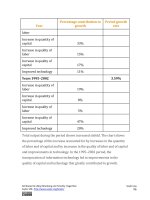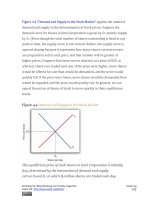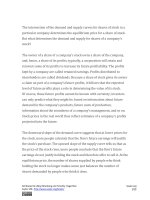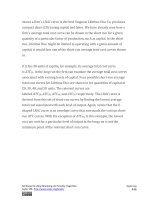Authors libby rittenberg 470
Bạn đang xem bản rút gọn của tài liệu. Xem và tải ngay bản đầy đủ của tài liệu tại đây (289.67 KB, 1 trang )
Thus we are using the model of perfect competition whenever we apply
the model of demand and supply.
We can understand most markets by applying the model of demand and
supply. Even though those markets do not fulfill all the assumptions of the
model of perfect competition, the model allows us to understand some key
features of these markets.
Changes within your lifetime have made many markets more competitive.
Falling costs of transportation, together with dramatic advances in
telecommunications, have opened the possibility of entering markets to
firms all over the world. A company in South Korea can compete in the
market for steel in the United States. A furniture maker in New Mexico can
compete in the market for furniture in Japan. A firm can enter the world
market simply by creating a web page to advertise its products and to take
orders.
In the remaining sections of this chapter, we will learn more about the
response of firms to market prices. We will see how firms respond, in the
short run and in the long run, to changes in demand and to changes in
production costs. In short, we will be examining the forces that constitute
the supply side of the model of demand and supply.
We will also see how competitive markets work to serve consumer
interests and how competition acts to push economic profits down,
sometimes eliminating them entirely. When we have finished we will have
a better understanding of the market conditions facing farmers and of the
conditions that prevail in any competitive industry.
Attributed to Libby Rittenberg and Timothy Tregarthen
Saylor URL: />
Saylor.org
470









